The Mill Has Been a Game-Changer For Our Household. Here’s Why
Men’s Journal aims to feature only the best products and services. If you buy something via one of our links, we may earn a commission.
Composting is one of the easiest and most impactful ways to reduce kitchen waste, enrich your garden, and contribute to a healthier planet. To say we're composting enthusiasts is an understatement — starting with the home I lived in as a child, I've been helping with the composting process since I was a little kid. Though I've still had a dedicated outdoor compost, these days it primarily serves as a dumping zone for organic material and kitchen scraps. The underlying tree root systems have been making it increasingly harder to turn the wet compost, so the quality and volume used in my garden have lessened over time. Pests are also an ongoing issue. For years, I've been intrigued by the smart home industry's newest indoor, automated kitchen composters, so when Mill reached out with an offer to test its newest food recycling system, I couldn't say no.
We named him 'Millennium Falcon,' and while I test drive lots of smart home systems to see what works best for consumers and families, the Force is strong with this one.

Mill
The Mill Gets Two Thumbs Up
Mill stands out in the growing category of countertop composters/food recyclers, and people are taking notice. In 2023 alone, the product was named a finalist in Time Magazine’s “Best Inventions of 2023” and Fast Company’s "Design Company of the Year," while also being credited in its “Next Big Things in Tech 2023.” It also received Good Housekeeping's “2023 Best Cleaning & Organizing Awards and Domino’s “2023 Good Design Award.”
This product is built by former Apple and Nest engineers, and it shows. What the system does is halt microbial decomposition to keep your food scraps from rotting, so the scraps are technically still food, though processed at a temperature that breaks them down into a very fine "soil."
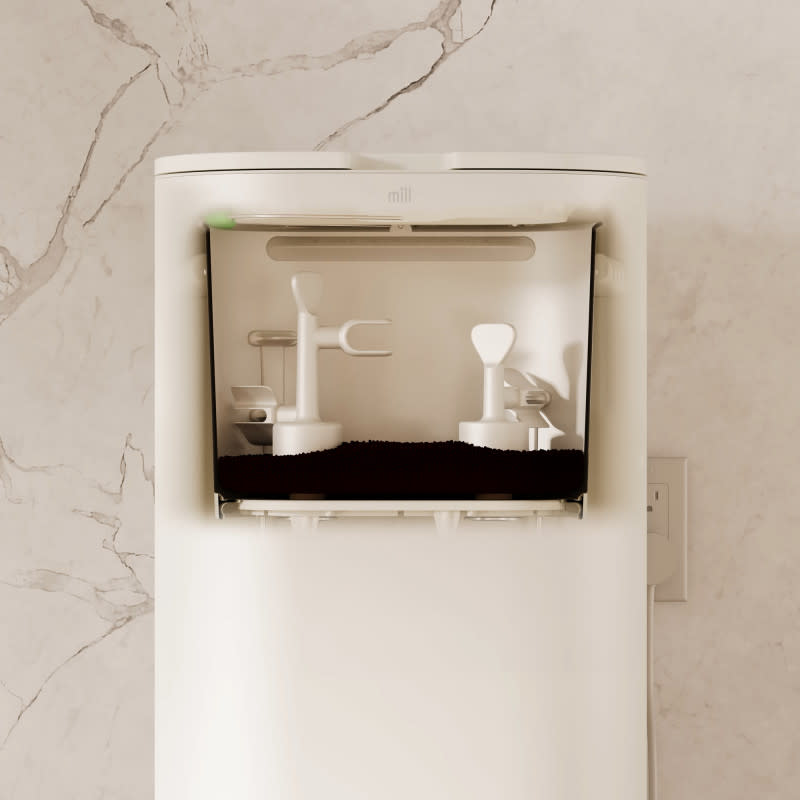
Mill
“The first generation of Mill is the best product I’ve worked on in my career," said Matt Rogers, Cofounder and CEO at Mill. "The next generation is even better. In less than a year, we’ve already helped people save one million pounds of food by turning kitchen scraps into food for farms and gardens. Mill fulfills the promise of what technology and innovation can and should do for society, making people’s lives easier while also making an impact on the planet."
The next generation includes new enhancements inspired by feedback from customers, faster food scrap processing, a quieter hum (only 41 decibels), and a sleeker design with a powder-coated steel enclosure and handles that double as air vents. Its maple wood style lid veneer and shape make it a sleek addition to any kitchen.
Features that set it apart:
Super efficient. Processes food scraps in as little as 2.5 hours (faster than most dishwasher cycles)
Holds a large volume. Bin can process up to 6.5L or 40 pounds of food scraps, and it doesn't need to be emptied between nightly cycles. It's likely that you won't need to dump your food grounds more than once a month.
Intelligent cycle. Yes, you can run it manually, but the intelligent cycle allows you to program a start time on your app. If you've added enough volume in kitchen scraps throughout the day, it will start by itself at the chosen time. (Didn't produce much waste today? Only added eggshells? The system will automatically skip the cycle until more scraps are added.)
Quietly powerful. Only ~42 dB vs the louder 60 dB sound of smaller countertop electric composters. If you're out of the room, you won't realize it's running.
Quality materials. Stainless steel augers and a die-cast aluminum bucket with ceramic coating
Hands-free access. It opens using a foot pedal, like a traditional flip-top garbage can.
Optional lock. For family safety, you can put a lock on the lid at all times, only when running (when it's hot), or not at all (when left unlocked, you can even add new scraps to your Mill mid-cycle. It will recalibrate the necessary processing time.
Affordable coconut charcoal filter. Your compost will never smell ripe, and the dry food grounds won't smell, either. Plus, the filter only needs to be changed once a year ($60, or included in the cost of your annual rental subscription).
8.2' cord
Mill Pickups. The company offers to take scraps if you don't have a use for them at home. Scraps are circulated to farmers as food for chickens, or turned into compost.
Shelf-stable food grounds can be kept for months (even those that contain meat and dairy products)
Can be leased for a low $29.99 monthly fee (the subscription model is billed annually, not monthly) or purchased outright for $999. This is less than most curbside compost services.
Size: 27.7"H (37.5" when the lid is open) x 16.6"W x 13.8"D
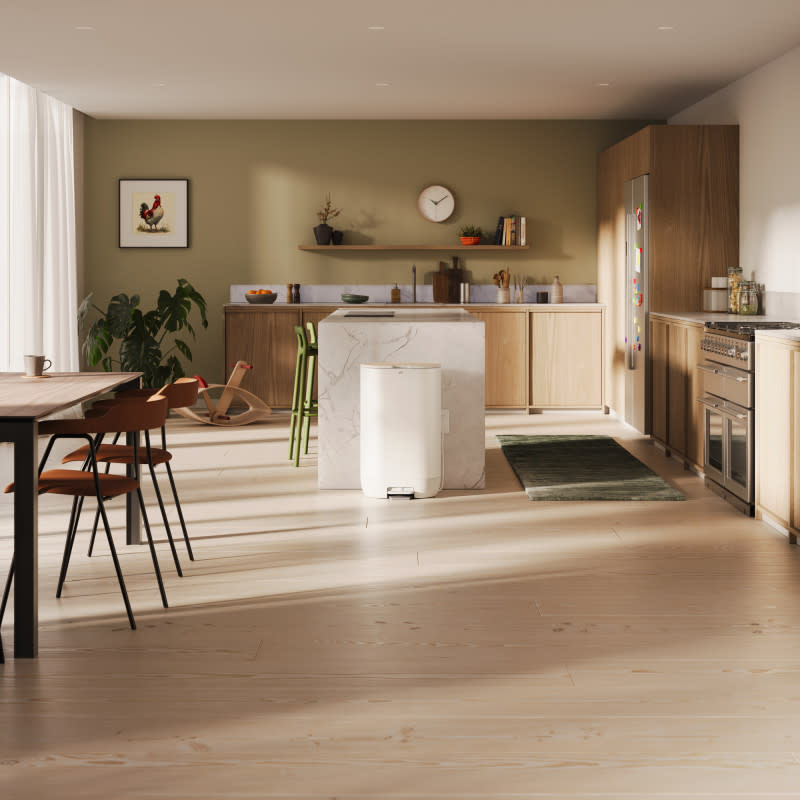
Mill
Benefits of Indoor Composting
Using Mill offers numerous benefits that make it stand out from other composting methods and systems, but the collective motivations of all manufacturers are diverting food waste from landfills in a big way. "One million pounds diverted is a significant milestone not only for Mill, but for the waste industry overall, primarily because that number is real," shares Nick Lapis, Director of Advocacy at Californians Against Waste. "With sensors and scales inside Mill and access to pathways that get food scraps back to farms, Mill isn’t relying on guesswork or assumptions to figure out how much food they’ve kept out of the landfill. They can accurately measure food waste at the household level, which is a challenge that has plagued public officials for decades. This kind of innovation and systems change is going to be key to ensuring the success of California’s landmark food waste law, SB 1383, and it’s exciting to see California companies rise to this challenge.”
Environmental Impact: Mill significantly reduces the amount of food waste that ends up in landfills, lowering your carbon footprint. By composting at home, you contribute to a healthier environment and promote sustainable living.
Convenience and Ease of Use: Mill takes the guesswork out of composting. Its automated process is perfect for busy households, requiring minimal effort while delivering maximum results. No more dealing with smelly, messy compost bins!
Gardening Benefits: Mill produces nutrient-rich compost ideal for outdoor gardens and landscaping. Your plants will thrive with the organic matter that enhances soil health and fertility. Our garden has never looked better since we started using compost from Mill.
Health and Cleanliness: Mill’s advanced odor control and pest prevention features keep your kitchen clean and fresh. You can compost with confidence, knowing that Mill manages odors and prevents pests effectively. There are no fruit flies, no bad smells.

Mill
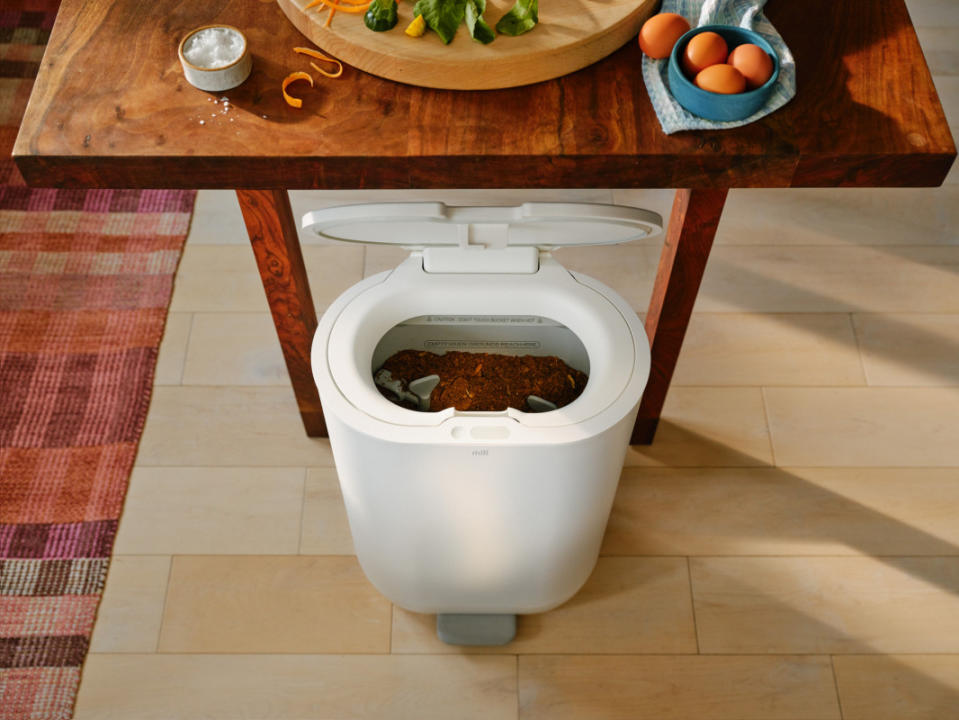
Mill
Best Practices for Composting Food Scraps
Know what you can compost. Yes, most organic food scraps are safe for Mill, including small chicken bones and other meat, as well as dairy (cheeses!). Within the app, the Food Library is a great resource that helps consumers know what's safe and what to avoid. Potatoes and coffee grounds? All good! Ground pork and shrimp? Finally, a good way to get rid of these scraps! Candy and Cake? Only in small amounts to avoid gumming up the machine. Beer and bacon grease? Hard no.
Smaller food pieces are easier to process. This is especially important for fibrous items, like artichokes and pineapples. We've been chopping them up into smaller pieces.
Avoid adding too much moisture. Let's say your 7-year-old never finishes his breakfast cereal. The milk should go down the drain, but the soggy O's are safe for Mill.
Make composting part of your daily routine. Place your Mill system in a convenient location, and make it a habit to add scraps as you cook. Select a preset time for your daily Dry & Grind cycle, and monitor on the app how much weight your household has already diverted from the landfill.
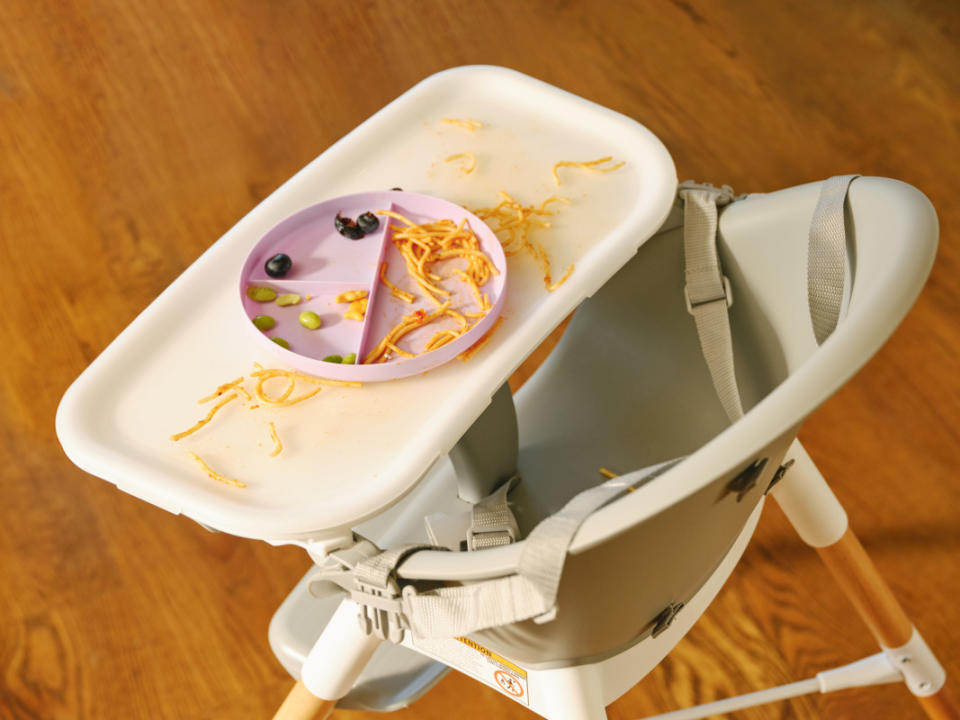
Mill
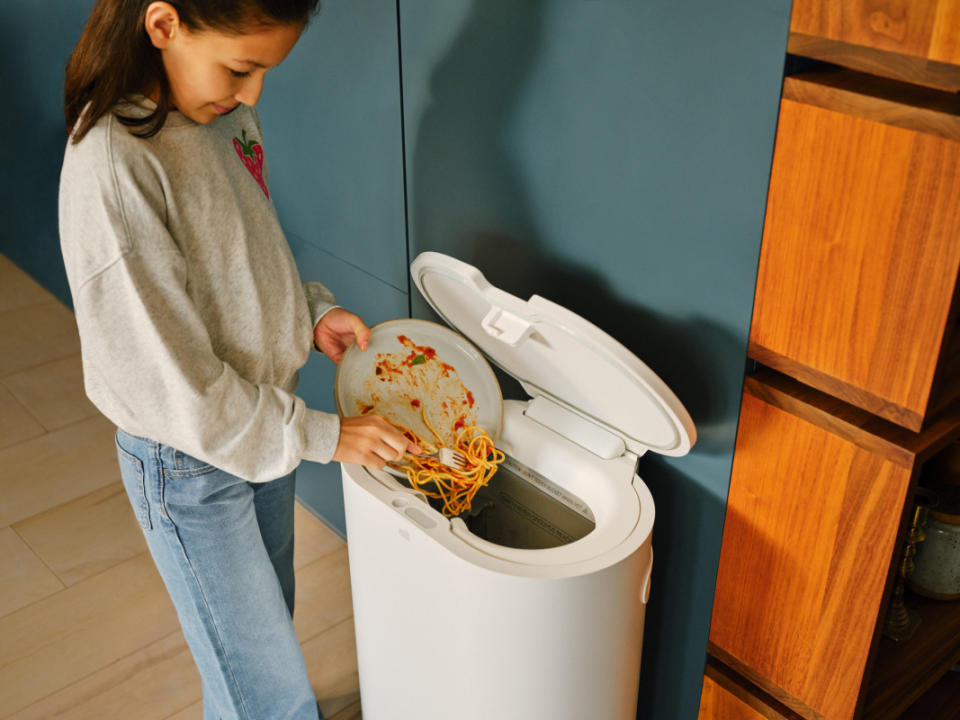
Mill
FAQ: About Mill
Can the Mill accept "compostable" plastics, cutlery, or dinnerware?
No, and you shouldn't put organic plant material in there, either. The Mill kitchen bin produces 'Food Grounds' which are still food, minus the water, bulk, odor, and other unwelcomed factors of decomposition. While composting is produced when microbes digest organic matter (such as food and plants) over weeks and months, food grounds are created by grinding and dehydrating your food scraps.
What do Mill food scraps look like?
The food scraps are broken down into small, dehydrated pieces. They're finely chopped and present more like soil or mulch. Even the eggshells are unrecognizable (and you can't say that if you have a traditional garden compost bin). We've found that after the food grounds are processed repeatedly (night after night as our batch grows), the grounds become very fine. We've been testing it with all your ordinary food scraps—broccoli, banana peels, apple cores—as well as with more fibrous materials, like corn husks, pineapple tops and skin, as well as with avocado peels and nuts.

Emily Fazio
How can you use the food scraps in your garden, lawn, or landscaping?
Our primary interest in composting was to supplement the nutrients in our backyard garden and landscaping, and yes, I have been putting the scraps to work during peak planting season. Mill offers homeowners great guidance on how to make the most of their food grounds:
Garden: Food grounds can be mixed right into the top six inches of garden soil to add nutritional value while planting. They recommend eight cups of material per 10 sq. ft., or five gallons per 100 square feet. They suggest that adding the grounds two weeks before planting will help promote microbial activity and enrich the soil.
Lawn and Landscape: The food grounds can be sprinkled on the grass like fertilizer, though Mill only recommends an application rate of 15 pounds (two buckets) over 100 sq. ft. They add that you shouldn't fertilize the same area more than 3x a year due to the potential for high salt content and microbial activity.
You can also place your grounds into an existing outdoor compost for faster decomposition. If you don't have a place to use your food scraps (renters and apartment dwellers, I'm looking at you!), remember that you can mail back your scraps at no cost via Mill Pickups. It will be used for chicken feed and compost.
What kind of maintenance does the Mill composting system require?
Maintaining the Mill composting system is straightforward. Regular tasks include emptying the compost bin when the sensor tells you it's full (every few weeks to once a month, depending on volume), replace the filter annually to prevent odor build-up, and wipe down the interior between empties. The smart home system is Wi-Fi enabled, so all software updates will happen behind the scenes.
How long does it take for the Mill composting system to produce compost?
The time it takes for the Mill composting system to produce compost varies depending on the types and quantities of waste added. Generally, the system can convert kitchen scraps into usable compost within a few weeks. The automated process accelerates decomposition, significantly faster than traditional composting methods. Users can regularly add waste to the system, which continues to process materials efficiently, providing a steady supply of compost for gardening needs.
How will I make the most of my food grounds?
Tilling the food grounds into our existing garden is our planned course of action. We can also continue to add them into our existing compost pile, but I think getting the grounds worked into our existing garden beds will be the best way to add nutrients into the soil and get the microbiome activity rolling.
Related: 20 Smart Home Devices We’re Obsessed With This Year

